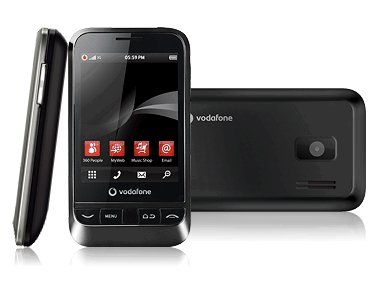TechRadar Verdict
Pros
- +
Android 2.1 OS
- +
Huge array of functionality
- +
Decent UI
- +
Google Maps Navigation
- +
Small package
Cons
- -
Slow processor
- -
Buggy apps
- -
Low screen resolution
- -
Resistive touchscreen
- -
Difficult keyboard
- -
Vodafone web services
- -
Limited internal storage
- -
Poor camera
Why you can trust TechRadar
We've picked up the new Vodafone 845, the budget Android handset that hasn't been examined in detail anywhere else, so this Vodafone 845 review is your first chance to see a definitive verdict.
We've seen many of the Most Wanted mobile outlaws come swaggering into the smartphone saloon slinging their Android 2.1 pistols, nonplussed by the hefty price upon their heads.
Now Vodafone has announced the arrival of a new deputy in town, toting the same weapon, but at a fraction of the bounty.
The Vodafone 845 is the network's first branded handset to feature the Google-powered operating system, and it's come out all guns blazing, throwing forward the latest incarnation of Android seen on handsets like the HTC Desire and HTC Legend.
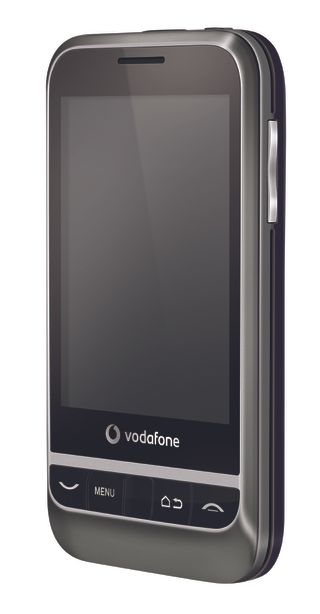
Of course, by that token, build quality, processing power, user interface, screen resolution and camera quality might be compromised compared with the £400 top-end players like the Google Nexus One and Motorola Milestone, but Android 2.1 on an affordable alternative is enough to take this handset seriously.
The Huawei-built handset isn't available SIM-only at present, but it's free to own from just £15 a month from Vodafone.
It's very much a case of choosing the supermarket brand baked beans over Heinz. If you're willing to sacrifice a little extra taste, the tin will still contain beans and something resembling tomato sauce.
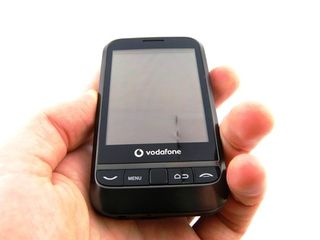
The Vodafone 845 is one of the dinkiest smartphones available on the market and with a 2.8-inch TFT touchscreen it'll sit alongside the likes of the Sony Ericsson Xperia X10 Mini, and Palm Pixi Plus in terms of size.
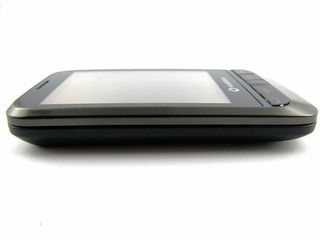
The screen doesn't dominate the 100 x 56 x 14.2mm body as much as you'd think, though, and the handset could be a good deal smaller there.
There's plenty of room around the screen and the four plastic buttons (Call, Menu, Back, End call) at the base of the device are pretty thumb-friendly too. In the centre of those buttons is a touch-sensitive trackpad, which enables you to scan through and summon Home screens.
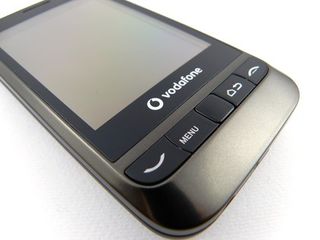
The chassis itself is metallic, with a distinctly different (and hard to remove) plastic back. On the back of the device is the 3.2-megapixel camera and the speaker, while the right-hand edge houses the metal volume controls.
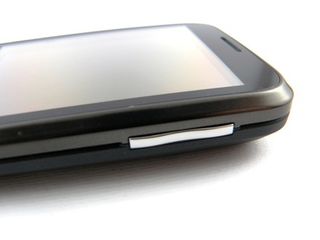
On top of the device is the power switch (which also locks the screen) and case release flap, while underneath is a 3.5mm headphone jack and micro-USB charging port.
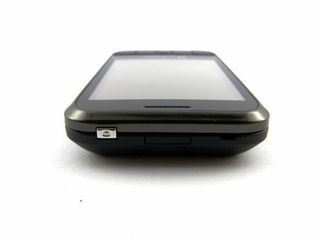
The centre button, which underpins much of the phone's functionality, also works as a mechanical camera button. The microSD slot lives beneath the casing
The device fits in the hand quite nicely and, at 110g, it's reassuringly heavy. It's the same weight as the HTC HD Mini, while being 10g lighter than the X10 Mini.
It's not exactly the slimmest at 14.2mm, with the HTC Desire at just 11.9mm, but we're not going to sit here quibbling about 2.3mm on a handset packing this much into a tiny body.

The screen resolution and touchscreen quality on these lower-end touch devices are always a concern. When switching the device on, the 240 x 320 screen doesn't amaze, but its compromised quality is not overbearingly apparent.
The icons and images are by no means up there with the crisper and clearer smartphones screens on the planet, and doesn't match up to many of the smaller, cheaper handsets around, like the Palm Pixi Plus, which maintains a smooth and crisp resolution.
The bespoke Vodafone widgets on the Home screen are particularly poor, but once inside the Android interface, it's a lot better.
The touchscreen itself is resistive rather than capacitive, and it does it's best to resist your commands a large part of the time. Swiping and moving around apps is relatively responsive, but getting the desired response from simply pressing the touchscreen can be difficult. Typing? Again, not so easy.
In the box
The handset is accompanied by a micro-USB charging cable and AC plug adaptor as well as a pair of headphones, which double up as a hands-free kit. There's also a simple set-up guide within the minimal packaging.
Sadly the device doesn't come loaded with a microSD card, the capacity for which is 16GB. The phone's internal memory is 512MB, so there's space for the odd photo, video and application, but for anything beyond that you're going to need to buy one.
A technology journalist, writer and videographer of many magazines and websites including T3, Gadget Magazine and TechRadar.com. He specializes in applications for smartphones, tablets and handheld devices, with bylines also at The Guardian, WIRED, Trusted Reviews and Wareable. Chris is also the podcast host for The Liverpool Way. As well as tech and football, Chris is a pop-punk fan and enjoys the art of wrasslin'.

This Game Boy-styled MagSafe stand just tickled my retro-gaming synapse – now all I need is a matching controller for Nintendo emulators

AI Explorer could revolutionize Windows 11, but can your PC run it? Here's how to check

Netflix's Wednesday season 2 cast clicks into gear with Westworld star addition as Apple's Neuromancer series finds its lead
